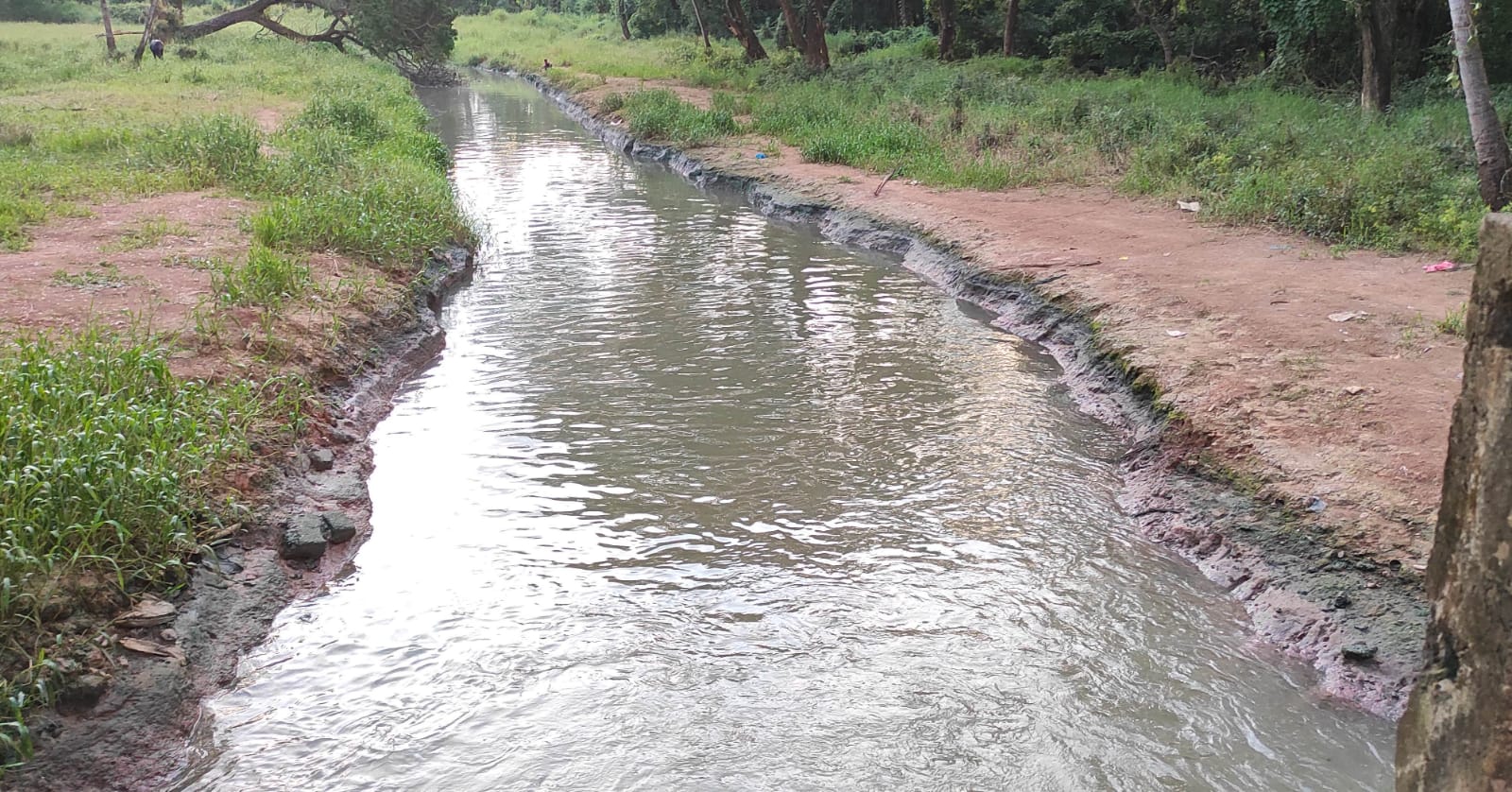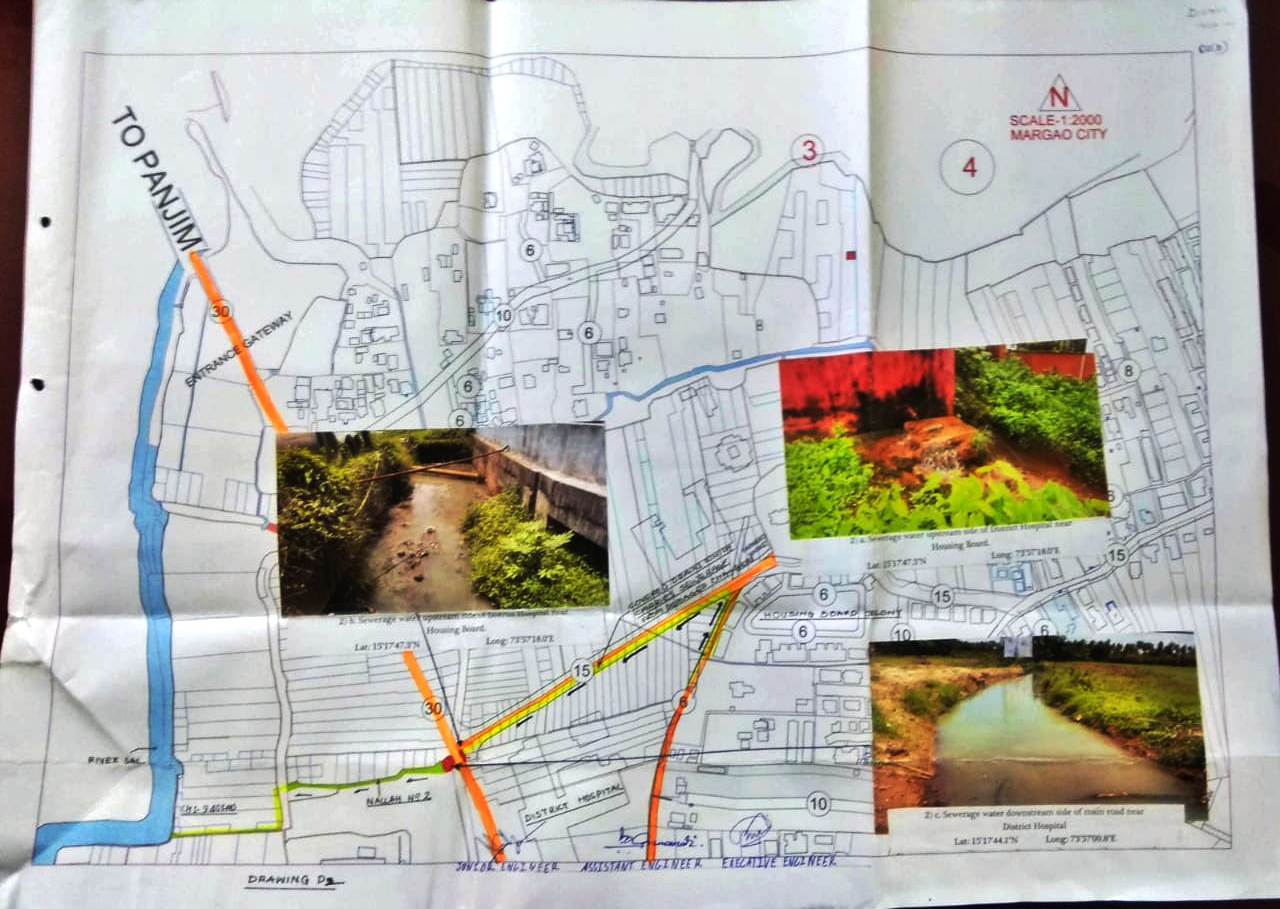
A storm water nullah carrying sewage into River Sal along the Margao Ring Road at Comba. Santosh Mirajkar

MARGAO: Have the authorities drawn up any plan to stop sewage flowing through storm water nullahs from into River Sal, Salcete’s lifeline, and restore the river to its pristine glory?
A report compiled by Water Resources Department, with recommendations how to stop contamination of River Sal gives an insight into the burning issue, how the water nullahs have caused pollution of the river over the years.
A glance at the report compiled by WRD Executive Engineer Ankush Gaonkar based on an inspection carried out sometime ago shows that some of the nullahs have been discharging sewage directly into the river continuously over the years. “I tried to trace out the source of sewage discharge, and it was found that some of the chambers of sewerage line of PWD at Fatorda and Margao are damaged, which discharge the sewage in the nullah before flowing into the river”, he said.
Gaonkar added: “There is no perennial nullah flowing/carrying water into River Sal between the two points, but there exist major nullahs which carry rain water during the monsoon and gets dried up in the month of February. Of these, some of nullahs act as canals to carry the discharge of sewage in River Sal which is the main reason of pollution of water of River Sal”.
Besides, the report pointed out the treated sewage water has been released near the new Navelim bridge through the nullah which originates from Saipem lake. The report has called for verifying the water quality of the water.
River Sal has been identified among the most polluted rivers in the country under category III by the Central Pollution Control Board (CPCB) having BOD level range between 4.2 – 16.8 mg/lit.
The National Green Tribunal in the original application No 673 of 2018 in its order dated 20/09/2018 directed the State Government to prepare an action plan for bringing polluted river stretches fit at least for bathing purpose.
Accordingly, the Goa State Pollution Control Board has prepared an action plan and directed various departments to take immediate measures to rejuvenate River Sal. Accordingly, Water Resources Department has prepared an estimate to desilt River Sal and its nullahs in phases, with the department having executed phase I of the project, starting from the district hospital, Margao.
RECOMMENDATIONS AND SUGGESTIONS
1) An important recommendation has been made to the Sewage Corporation to connect the sewerage line to the next immediate chamber bypassing the damaged ones
2) Similar rectifications are to be taken up for remaining chambers either by bypassing the damaged chamber or connecting the new sewerage line as early as possible
3) Form a committee consisting of representative from all the concerned Departments headed by the Secretary for Environment to carry out regular inspections
4) Take preventive measures by constructing the chain link fencing on either side of the road culvert/Bridge to stop the dumping the garbage to the river
5) Stop any further construction along the bank of River Sal for a distance of eight meters from the outer bank of the river boundary and the same may be utilised as a inspection
NULLAHS DISCHARGING
SEWAGE INTO RIVER SAL
>> Nullah at Ambaji Fatorda which carries sewage discharge from damaged chamber and joins with River Sal
>> Nullah at District Hospital which joins with River Sal after Ch 9.40 km before wholesale fish market
>> Nullah at Colva road from damaged chamber after the Colva circle at junction of Comba railway under bridge road
>> Nullah at Comba-Margao near Vittal Mandir which joins River Sal near the railway bridge
>> From houses at Shirvodem and surrounding areas which flows directly to the River Sal
RIVER SAL is the lifeline of Salcete, originating from Verna Plateau and merging into Arabian Sea at Mobor, near Betul Bay. It has a length of 40 km of which 20 km is saline water.
Due to increase in habitation within Margao city and Fatorda and due to various infrastructural development activities along the bank of the River Sal, there is a major siltation in the river and also due to uncontrolled release of sewerage waste (solid and liquid form) directly into the river, leaving the water polluted.